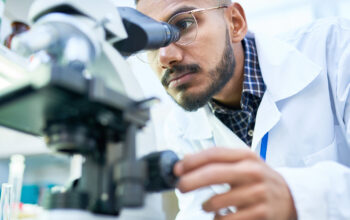Unlikely bedfellows join to fight superbugs
In January 2016, more than 100 companies and industry associations had signed a Declaration on Combatting Antimicrobial Resistance at the World Economic Forum in Davos, followed by a Roadmap of several big pharma at the UN High-Level Meeting in September 2016 – a common framework of principles for global measures to curb the development of antibiotic resistance. The “AMR Industry Alliance” now links these two initiatives together and will ensure that the signatories collectively deliver on the commitments made.
It is pretty rare for highly competitive life-science industries to share their plans. But this is exactly what big research pharma companies and generics manufacturers as well as biotech and diagnostic companies have agreed is needed to reduce the increasingly worrying human and economic toll of antimicrobial resistance (AMR). Last week at the B20 Health Conference in Berlin, the “AMR Industry Alliance” was launched. Over the coming year, the Alliance is going to track progress on how they are doing to live up to their side of the bargain in the fight against AMR.
With a robust reporting mechanism to track progress, the Alliance signals that it wants to be measured against its specific commitments, increasing accountability for the companies that have signed up. The work of the Alliance will help to understand not only about what these companies are doing to invest in new research to develop new antibiotics and vaccines, but it is also about what tangible steps they are taking to prevent infection and improve appropriate use of antibiotics. Through the Alliance, representatives from across the life-science industry are working together to determine the targets for progress set in each area of commitment – including environment, appropriate use, access, and R&D. The progress report will help assess the key challenges outside of industry’s sole control that impedes actions to reduce AMR, and will facilitate collaboration between the public and private sector.
Anyone who thinks that this is a mere communication exercise is wrong. The planned reporting mechanism will document progress, identify gaps, and set goals for the future. It is critical to draw on lessons and solutions from across the broad Alliance community to reduce AMR. Breaking down the traditional silos across the life-science industry and sharing information will increase accountability and facilitate progress.
Without appropriate measures, multi-resistant bacteria could claim up to ten million lives per year by 2050. This is a frightening forecast, and there is consensus about the scale of the problem. But, there is also consensus that there are no simple solutions. There is a need for national action plans to call for responsible use of antibiotics – not only in human medicine, but also in agriculture. Just last week, the G20 countries said “the prudent use of antimicrobials in both human and animal health is of utmost importance to preserve the effectiveness of existing and new antibiotics for as long as possible”. This is yet to be effectively implemented.
The life-sciences industry has long been a committed partner in the search for sustainable solutions on AMR. The Alliance will offer a space for the companies to learn from others and take actions. However, it is essential that a number of “willing countries” commit to promote research. We need to see resources put on the table to encourage basic research through subsidized public-private partnerships – so-called “push” measures. Likewise, it also became clear at the B20 in Berlin, that we need (“pull” measures) incentives in the patent system and / or “market entry rewards” for the development of new drugs. And finally, in order to achieve success in the fight against antimicrobial resistance, openness is required for all new approaches as well as understanding that there is no panacea, but a mix of different interventions – spanning different sectors and areas, including public health, animal health, and environment – can overcome the staggering threat AMR represents for our society, economies, and citizens.
One might ask what can be expected from such a broad alliance of research-based pharmaceutical companies, generics, biotech and diagnostic companies. We would say that the aim of the Alliance is simple but tangible. We want to track and report on what we are doing, and by sharing our work and the lessons we can draw from our successes and failures with governments, the WHO, G20, OECD, we hope the Alliance’s work will lead to more informed, evidence-based decision making.
This blog was first published in thePharmaLetter on 30 May 2017.
Author






